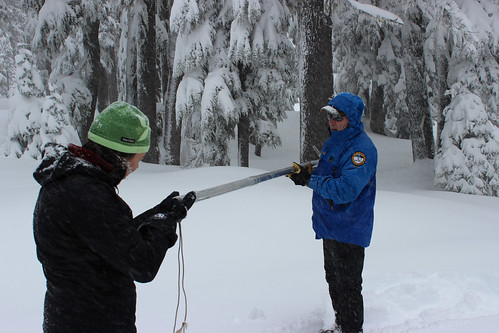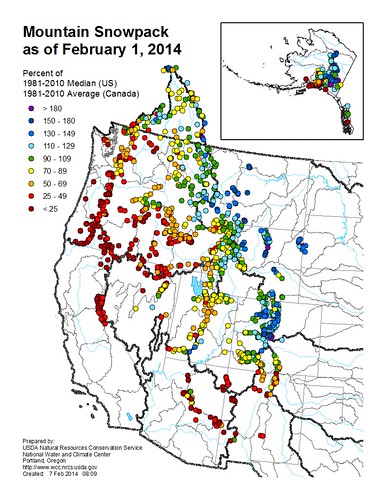
Limited water supplies are predicted in many areas west of the Continental Divide, according to this year’s second forecast by the National Water and Climate Center of USDA’s Natural Resources Conservation Service (NRCS).
Right now, snow measuring stations in California, Nevada and Oregon that currently don’t have any snow, and a full recovery isn’t likely, the center’s staff said.
USDA is partnering with states, including those in the West, to help mitigate the severe effects of drought on agriculture.
USDA announced last week that $15 million was available for conservation assistance to farmers and ranchers in affected areas in California, Texas, Oklahoma, Nebraska, Colorado and New Mexico. As part of the announcement, $5 million was also made available to California communities through the Emergency Watershed Protection Program. Earlier this month, USDA made another $20 million available to farmers and ranchers in California. Agriculture Secretary Vilsack joined President Obama in California on February 14th to announce those and other drought relief measures.
Parts of eastern California are now in a state of emergency because of drought. This area is suffering one of the lowest snow years on record. Meanwhile, in Oregon, mountain snowpack is far below normal.
“The chances of making up this deficit are so small that at this point we’re just hoping for a mediocre snowpack,” said NRCS Hydrologist Melissa Webb for Oregon. “We’d need months of record-breaking storms to return to normal. There’s a strong chance we’ll have water supply shortages across most of Oregon this summer.”
Most Oregonians don’t have access to water from other states and depend on local sources for water supply.
Across the Continental Divide, Montana, Wyoming and Colorado are mostly near normal. The one exception is New Mexico, which is extremely dry.
Although NRCS’ streamflow forecasts do not predict drought, they provide information about future water supply in states where snowmelt accounts for the majority of seasonal runoff.
NRCS has conducted snow surveys and issued regular water supply forecasts since 1935 and operates SNOTEL, a high-elevation automated system that collects snowpack and related climatic data in the western United States and Alaska. These data help farmers, ranchers, water managers, hydroelectric companies, communities and recreational users make informed, science-based decisions about future water availability.
View February’s Snow Survey Water Supply Forecasts map or view information by state.
Other resources on drought include the U.S. Drought Monitor and U.S. Seasonal Drought Outlook map, which forecast drought conditions through April 30, 2014.
Learn more about USDA’s drought efforts and how NRCS is helping private landowners deal with drought.

